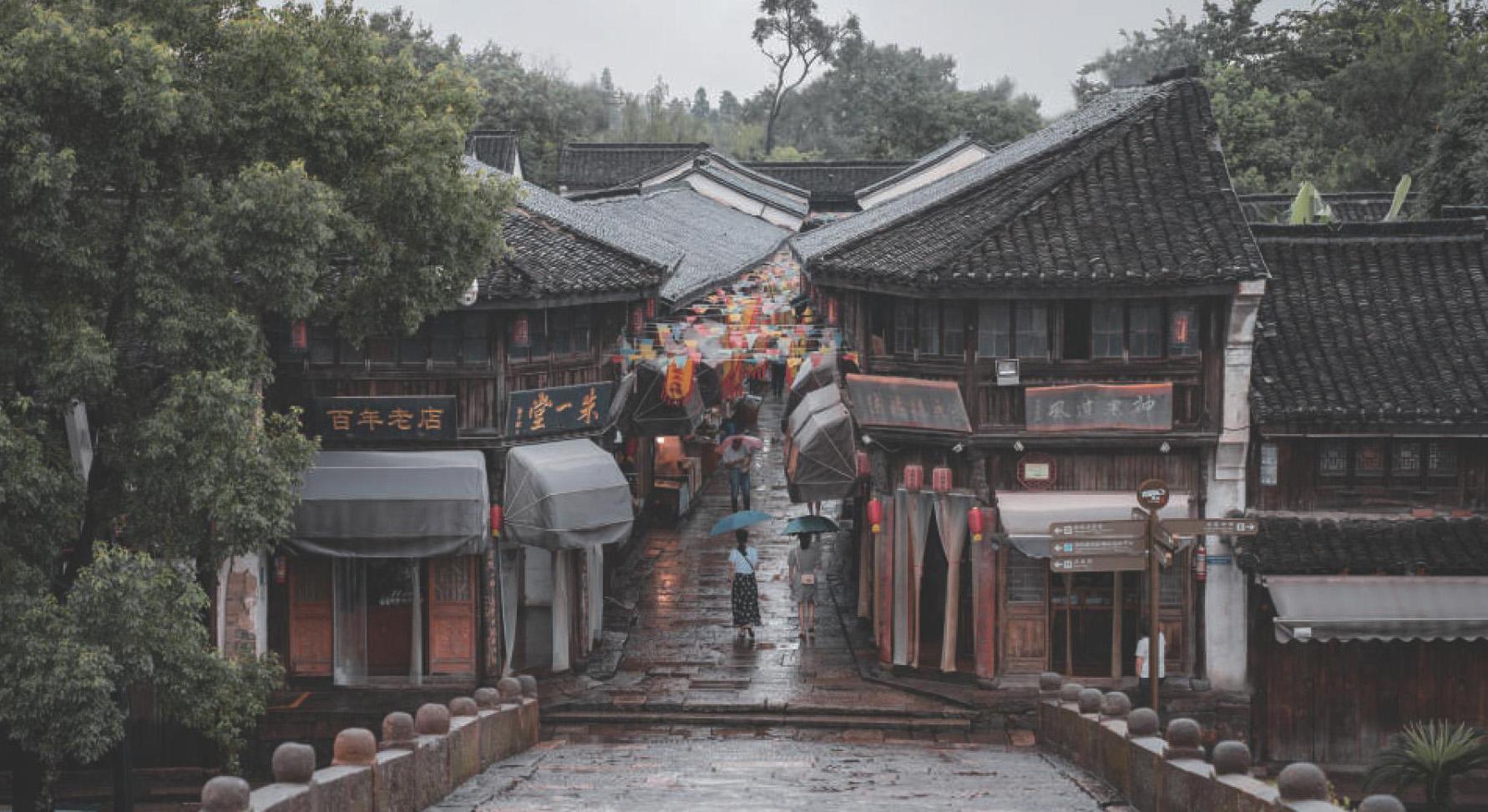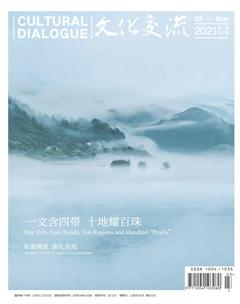大运河诗路:大地上的诗行



京杭大运河无疑是人类文明史上的杰作。在广袤的中国大地上,京杭大运河如威龙出世,沿着它的走向,我们从京城来到天堂杭州。一路上,是巨人握笔,在大地上写下的流传千年的诗行,而这些诗行,既有大气磅礴的高山仰止,亦有小桥流水的浅吟低唱,既有苍茫艰苦的长途跋涉,也有轻盈灵动的美曼舞路。
寻迹江南好去处
隋代开凿的名为通济渠的大运河,唐代称为汴河或汴水,其连接黄河和淮河,西通河洛,南达江淮,成为唐代大运河的主要河段,南方的物资和商旅,从水路到洛阳和长安都要由此经过,因此唐诗對它的描写几乎涉及和其相关的各个方面。这些缤纷多彩的唐诗,把多元的大运河呈现在人们面前。
在浩如烟海的唐诗中以大运河为审美对象的诗歌创作数量众多。张志和《渔歌子·西塞山前白鹭飞》、白居易《忆江南·江南好》、柳永《望海潮·东南形胜》等名篇,勾勒了江南古韵和丝路盛景。
隋朝开凿了大运河,但是由于隋朝“功成力尽人旋亡”(王泠然《汴堤柳》),所以唐朝才是真正的受益者,正如薛能《杨柳枝》所写:“隋家力尽虚栽得,无限春风属圣朝。”唐代疏浚隋运河并开挖新河,形成了四通八达的水运网,并设置了专门官职管理河道事务,航运稳定,运输能力大大提高,对唐王朝的兴盛发挥了极大作用。
李敬方的《汴河直进船》,“汴水通淮利最多,生人为害亦相和。东南四十三州地,取尽脂膏是此河”,准确地反映出大运河成为维系唐王朝的生命线的事实。皮日休的《汴河怀古》,“尽道隋亡为此河,至今千里赖通波。若无水殿龙舟事,共禹论功不较多”,更是看到大运河作为水利工程造福后世的价值。
唐诗中还有大量的篇章,描写出运河及沿岸的繁荣。“淮浪参差起,江帆次第来”(卢纶《送魏广下第归扬州》)、“山映南徐暮,千帆入古津”(卢纶《泊扬子江岸》),繁忙的运河带动了沿岸城市的兴起和商业的繁荣。“夜市桥边火,春风寺外船”(杜荀鹤《送友游吴越》)、“鱼盐聚为市,烟火起成村”(白居易《东楼南望八韵》)的杭州,“水门向晚茶商闹,桥市通宵酒客行”(王建《寄汴州令狐相公》)的汴州,“堤绕门津喧井市,路交村陌混樵渔”(李绅《入扬州郭》)、“夜市千灯照碧云,高楼红袖客纷纷”(王建《夜看扬州市》)的扬州,“沿溜入阊门,千灯夜市喧”(卢纶《送吉中孚校书归楚州旧山》)的楚州,无不是商贾如云,繁华热闹。王建的《汴路即事》,“千里河烟直,青槐夹岸长。天涯同此路,人语各殊方。草市迎江货,津桥税海商。回看故宫柳,憔悴不成行”,还描写了运河沿岸城市之外专门进行商品交易的“草市”。
从诗中我们看到,大运河承载商品流通的功能越来越大,吸引了大批操着不同语言的异域客商会聚到运河沿线,运河区域渐趋成为各民族杂居最集中的地区,促进了各民族文化的交流。元稹《法曲》“女为胡妇学胡妆”“五十年来竟纷泊”描写出在运河流域风靡胡妆、胡乐的情况。运河及其沿岸城市为各民族间的广泛接触和交流提供了一个适宜的场所,促进了民族的融合和发展,运河即成为各民族联系的纽带。
漂泊者的心脉律动
唐诗中的大运河又是一种主观的情感世界,不管是对河上漂泊的感慨,渡口送别亲友的感伤,还是对开凿运河功过的反思,无不是诗人客观现实的情感再现。这些精美的诗行在大运河里徜徉,幻化成一幅含韵丰赡的唐人情感画卷。
唐诗中的大运河是漂泊者的心脉律动。以洛阳为中心的南北大运河,和唐人的生活息息相关,他们仕宦、漫游经常往来其上,唐诗中留有诗人们在运河行进中的所感所思。滔滔不息的运河水,让诗人慨叹岁月的转瞬即逝、宦海沉浮的无奈:“浮生却似冰底水,日夜东流人不知”(杜牧《汴河阻冻》)、“年如流水催何急,道似危途动即穷”(罗隐《秋日汴河客舍酬友人》)。从停驻的渡口码头起航,引发诗人的许多客愁:张祜的《题金陵渡》,“潮落夜江斜月里,两三星火是瓜州”,描写出诗人彻夜难眠的羁愁旅意;张籍的《枫桥夜泊》,“月落乌啼霜满天,江枫渔火对愁眠”,展现了诗人身处乱世,孤独无依的缕缕清愁。风恶浪急的颠簸行船,坚定了诗人对理想前途的信心:“丈夫苟未达,所向须存诚。前路舍舟去,东南仍晓晴。”(孟云卿的《汴河阻风》)大运河是唐人的生命之河,他们漂泊在这条河流上,为生计而奔波,为理想而奋斗,失意时的惆怅和无奈、奋发和坚定都被流动的河水引发出来。
唐诗中的大运河是诗人离情别绪的策源地。大运河“商旅往返,船乘不绝”,数不清的离别就天天在渡口码头上演,渡口也就成为人们离情别绪的起航点。唐诗中呈现了离别的各种情绪:有悲伤,“爱树满西津,津亭堕泪频”(许浑《京口津亭送张崔二侍御》);有寂寥,“关河日暮望空极,杨柳渡头人独归”(薛逢《送卢缄归扬州》);有艳羡,“渚畔鲈鱼舟上钓,羡君归老向东吴”(崔颢《维扬送友还苏州》);有嘱托,“别后书频寄,无辞费笔毫”(姚合《送刘詹事赴寿州》)。而且河水的流动不居、一去不返使诗人联想到了好友的一去不归:“炀帝陵边草木深,汴河流水空归海。古今悠悠人自别,此地繁华终未歇。”(李涉《醉中赠崔膺》)寂寞流淌的汴河水,如同离开朋友的落寞之情:”汴水饶曲流,野桑无直柯。但为君子心,叹息终靡他。”(孟郊《汴州留别韩愈》)曲折蜿蜒的汴河水,就像诗人的颠沛流离,诗人羁旅的感伤和离情难诉的惆怅,溢于言表。
唐诗中的大运河是诗人反思历史、慨叹兴亡的精神空间。唐朝的大运河是在隋朝大运河疏通整理的基础上通航的,隋朝短命和隋炀帝花费大量人力物力开凿大运河并多次南下巡游有很大关系,大运河这段独特的历史,促使诗人自觉反思大运河的开凿并抒发了历史兴亡的慨叹。
白居易的《隋堤柳》详细描述了隋炀帝“南幸江都恣佚游”而使“海内财力此时竭”的罪行,从而导致“萧墙祸生人事变,晏驾不得归秦中”的国破身亡的结局,表达了对大运河开凿的否定态度。王泠然的《汴堤柳》,“隋家天子忆扬州,厌坐深宫傍海游。穿地凿山开御路,鸣笳叠鼓泛清流”,以及许浑的《汴河亭》,“广陵花盛帝东游,先劈昆仑一派流”,都认为隋炀帝开凿大运河是为了江南巡游,满足自己的一己私欲。而且开河、植柳、巡游劳民伤财:“炀帝开河鬼亦悲,生民不独力空疲。”(罗邺《汴河》)”炀帝龙舟向此行,三千宫女采桡轻。”(徐凝《汴河览古》)”春风举国裁宫锦,半作障泥半作帆。”(李商隐《隋宫》)制造龙舟、楼船数万艘,锦帆彩缆,三千宫女跟随,穷奢极靡。有的诗作直接指出运河的开凿导致了隋朝的灭亡:“千里长河一旦开,亡隋波浪九天来。锦帆未落干戈起,惆怅龙舟更不回。”(胡曾《咏史诗·汴水》)
面对引发隋朝灭亡的大运河和隋堤柳,诗人在讽刺之余更多的是慨叹。江为《隋堤柳》:“锦缆龙舟万里来,醉乡繁盛忽尘埃。空余两岸千株柳,雨叶风花作恨媒。”锦缆龙舟,醉乡繁盛,化为尘埃,可见历史沧桑。昔日隋炀帝所树堤柳,今日却成为其荒淫误国的历史见证,这使后人深感繁华易尽,历史无情。虽然隋朝覆辙在前,但唐朝并没从其灭亡的事实中汲取教训,更使诗人感慨不已:“梁苑隋堤事已空,万条犹舞旧春风。”(韩琮《杂曲歌辞·杨柳枝》)诗人叹古怀昔,希望人们能在前朝兴亡的史实中,看到本朝現实痼疾,以起到警世和鉴戒的效果。诗歌中这种对国家前途命运的普遍关注,展现出文人群体内心感伤忧虑的精神世界。
文化遗产闻名世界
2014年6月22日,大运河被列入世界遗产名录。作为杭州世界文化遗产之一,京杭大运河最美丽最具美誉的所在无疑位于杭州。话说大运河上“第一桥”——拱宸桥,就位于杭州城北。
拱宸桥,它位于杭州老城的最北端,也是一座保存完好的石拱桥,桥面全是石板铺就的台阶是座唯一保持完好的古老石拱桥,这也是唯一只准行走不可通车的桥,它是杭州城中最古老最闻名的十大名桥之一,因为它不通车,所以它除了交通作用之外,还是附近居民喜欢在夏季晚上纳凉的好地方,又风凉又安全。
桥下西岸是一长条沿河而建民宅区,是杭州人就会知道:拱宸桥河西直街最具有古老特色。
听前辈人说老底子这里灯红酒绿是个典型的娱乐区…如今也已成为一个景点,并将它的原貌保留了下来,全是青瓦青砖的老建筑,虽然长年与河相伴,但依然坚固耐用。
“鱼盐聚为市,烟火起成村”,一千多年前,白居易就曾描绘出运河及沿岸的繁荣。大运河诗路以世界文化遗产大运河为纽带,沿途穿越湖州、嘉兴、杭州,绍兴、从宁波汇入大海,沿岸风光旖旎,人文历史荟萃。
长虹桥是浙北平原地区软地基上修建的最大石拱桥。2014年,中国大运河申遗成功,长虹桥作为嘉兴仅有的两个遗产点之一入选其中。
长虹桥西面,就是闻名遐迩的长虹寺,新建的长虹公园内满眼翠绿。古代的遗迹,秀丽的风景,让时光在王江泾古镇慢了下来。
江南运河几经变迁,西线航道活跃至今,这条西起长兴县小浦镇,东至上海市松江区,全场141公里的黄金水运线,就是浙江八大水系之一的长湖申航道。
作为浙江省水运“十三五”发展规划项目之一,长湖申经历数次拓宽,已经具备了千吨级船只的通行能力,它将沿线装备制造、金属加工、建筑材料等特色产业串点成线,发挥浙北水上主动脉的重要作用。
塘栖古镇是京杭大运河杭州段的起点,运河穿镇而过,拥有广济桥、乾隆御碑、郭璞井等众多古迹。作为杭州的水上门户,千百年来无数文人墨客流连于此。
广济桥是古运河上仅存的一座七孔石拱桥,有着500多年的历史,也见证着两岸日新月异的变化。如今的塘栖古镇为全开放式免费景区,近年来的保护与开发让它重现昔日的热闹景象,人们或漫步在沿街商铺,或休憩于古廊檐下,诗画江南的独特韵味扑面而来。
让人流连忘返的,不仅是慈湖,还有慈城古县城,慈城至今仍保留着唐代的街巷格局,是江南唯一保存较为完整的古县城,有“江南第一古县城”的美誉。
唐诗中的大运河,向人们展示了一个客观具体的大运河的存在,也展现了诗人丰富多彩的精神世界,但是两者并非截然分开,而是始终融合在一起:客观描写处处浸染着诗人的主观情感,而主观情感则是在客观描写的基础上展现的。以大运河为框架,诗人把主观情感、历史感和社会因素投射进去,为读者营造了一个深邃辽远的审美想象的世界。
(本文参考了戴永新所著《唐诗与大运河》,深表感谢。)
The Grand Canal Poetry Road: Sailing on a River of Emotions
The Jing-Hang (Beijing-Hangzhou) Grand Canal is undoubtedly a wonder in the history of human civilization. It extends across the vastness of China like a mighty dragon, bringing people all the way from Beijing to Hangzhou. Along the way lie not only historical landmarks, majestic landscapes and fascinating stories, but also lyrical poetry lines that have made them timeless.
It was during the Sui dynasty (581-618) that large chunks of Chinas Grand Canal that we see today were dug. Tongji Canal, a major section running over 1,000 kilometers, became the main inland water route in the Tang dynasty, transporting supplies and businesses from the south to Luoyang and Changan, the two capitals. Consequently, much had been written about the canal, called the Bian Canal at the time, in Tang poetry, from sceneries to everyday life, from politics to history.
Although the Grand Canal was dug in the Sui dynasty, it is the Tang dynasty, its successor, that reaped the benefits, for the Sui rulers were “dead immediately after things done and effort exhausted” (“Willows on the Bian Causeway”), and “all the glory belongs to Tang” (“Willow Branches”). Taking the Sui canal as the basis, Tang dynasty further expanded it by constructing new canals and establishing an extensive waterway network. Official posts were even set up to manage canal affairs. With a stable transportation system and much improved transportation capacity, the Tang dynasty prospered.
“Waves upon waves rise in the Huai River, ships upon ships arrive in no time.” A busy Grand Canal greatly helped the development of cities along its banks and businesses boomed. In Hangzhou, “A night market beside a bridge is ablaze with lights, as boats are moored outside a temple in the spring breeze.” In Bianzhou (present-day Kaifeng city), “Tea merchants haggle round the clock at water gates, rowdy drinkers booze all through the night at bridge markets.” In Yangzhou, “Thousands of lanterns at the night market light the blue sky, throngs of guests wine and dine amid fair ladies in buildings high.” … In every major city along the Grand Canal, it was a scene of hustle and bustle.
The Grand Canal was not only instrumental in boosting commerce, but also in promoting cultural communication and integration. According to Yuan Zhen (779-831): “Tang ladies are willing to marry men from the Western Regions and be dressed like them.” Indeed, the Grand Canal had become Tangs lifeline, especially at the dynastys latter stages, “Much good of Huai River connected by the Bian Canal, yet it also put common people in harms way. Lands of abundance in the Southeast, via the canal theyve been thoroughly taxed all,” as Li Jingfang (?-?) pointed out in this poem. And to Pi Rixiu (ca. 834-883), its benefits would last for generations upon generations:
While Suis downfall was triggered by the canal after all, the thousand-mile river is standing ever tall.
If not for their extravaganza and their subjects sweat and blood, the Sui rulers would have rivalled Da Yu, the Tamer of the Flood. (“Meditation on the Past at the Bian Canal”)
Clearly, in Tang poetry, the Grand Canal doubles as a vehicle to convey the poetsemotions and feelings, and serves as a symbol for them to reflect on the past. With Luoyang city as the center, the canal was connected to the life of the Tang people in every way, who often travelled along it for personal and official affairs. The seemingly unstoppable water, the ups and downs of the waves and departures of friends and relatives usually became the perfect triggers to sadness, disconsolation, resignation, determination, and countless other emotions, and to pen great poems.
“Crows caw at the setting moon and frost fills the sky, along the banks maples and fishers lights sad and sleepless I lie,” Zhang Ji (ca. 715-ca. 779) was apparently feeling melancholic when his boat moored along the Grand Canal in Suzhou city. For Du Mu (803-852), “Life is just like water under the frozen canal, running to the east without anyone noticing,” and little could be changed. Yet, Meng Yunqing (725-781) seemed to become quite determined when confronted with bad weather on the canal: “Destination still not reached, but be confident it will be fine. Leave the boat and forge ahead, in the southeast the sun will shine.”
Apart from personal life, Tang poets are also well known for their reflections on the vicissitudes of history. It is no exception when it comes to the Grand Canal. As Pi Rixiu already pointed out, the collapse of Sui dynasty, Tangs predecessor, was thought to have largely been caused by the building of the canal, and this understanding had a great bearing on Tang poets.
Bai Juyi (772-846) described the crimes of Emperor Yang of Sui (569-618) thus: “Touring Jiangdu [present-day Yangzhou] to the south in a wanton manner,” leading to “empty treasuries all over the country”and eventually the dynastys downfall. Some believed that the Emperor Yang of Sui dug the canal specifically to satisfy his personal desire to enjoy a lavish life in the south, one of whom was Wang Lingran (ca. 692-ca. 725): “Sui rulers are so fond of Yangzhou, theyd travel to the seaside for sitting in the palace they are bored. Excavating earth, digging through mountains they open new road, with trumpets and drums water begins to flow.” Others were appalled by the extravagance of the Sui dynasty. Li Shangyin (ca. 813-ca. 858) was quite blunt: “The whole nation was making imperial brocade in spring breeze, half into saddle fenders and half into sails.” Unfortunately, Tang rulers ultimately threw caution to the wind and succumbed to the same fate as Sui.
Listed by the UNESCO as a World Heritage Site on June 22, 2014, today, the Grand Canal is one of the worlds best-known cultural and historic attractions. To most people, there seems no disputing the fact that the most charming part of the Grand Canal lies in Hangzhou. Indeed, Gongchen Bridge, regarded as the “First Bridge” of the Grand Canal, sits right in the north of the city.
Literally meaning “bowing to the emperor at his arrival bridge”, it was initially built in 1631, the fourth year during the reign of Chongzhen, the last emperor of the Ming dynasty (1368-1644), and renovated several times during the Qing era. The highest and longest stone arch bridge in Hangzhou, Gongchen Bridge is perhaps best known as the place where Emperors Kangxi and Qianlong disembarked on their inspection tours of the city. Now, it is not only a popular place for local residents to hide from intense heat during mid-summer nights, but also one of the best-preserved historic attractions in Hangzhou. To the west of the bridge, a historical and cultural district has been set aside, with restored streets, buildings and shops, where visitors can immerse themselves in history.
Tangqi Ancient Town, the starting point of the Grand Canals Hangzhou section, is another good choice to get a glimpse of the past. Blessed with a rich heritage, including the 500-year-old Guangji Bridge, the only 7-arch stone bridge on the Grand Canal, the town has been open to public free of charge for quite some time. The idea of sustainable development, i.e. developing tourism without compromising conservation, has brought the bustling scenes of olden days back.
Yet another unique bridge along the canal lies to the northeast in Jiaxing city. Changhong Bridge, literally “long rainbow bridge”, is thought to be the largest stone arch bridge built on soft soil in northern Zhejiang. When the Grand Canal was selected as a UNESCO World Heritage Site in 2014, Changhong Bridge is one of the only two relics along the Jiaxing section that were included as major heritage items. To the west of the bridge is the renowned Changhong Temple, an ancient Buddhist temple sitting right behind the lush green Changhong Park. When boats and barges flow by, time seems to have come to a standstill.
While sections of the Grand Canal in Jiangnan (south of the Yangtze River) have undergone multiple changes, the western route is still active today. Known as the Chang-Hu-Shen Waterway, it runs 141 kilometers from Xiao Pu township in Changxing county of Huzhou city, to Songjiang district in Shanghai, and is one of eight major water systems in Zhejiang. To date, the Chang-Hu-Shen Waterway has been expanded quite a number of times and is now capable of carrying thousand-tonnage ships, which has played an important part in connecting featured industries along the route.
The Grand Canal is an indisputable engineering feat, but for Tang poets, it is also a metaphorical channel through which to express their innermost thoughts and feelings as well as their perspectives and opinions on history, politics, society, creating via poems a world of aesthetic imagination for readers.

